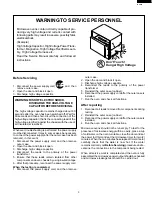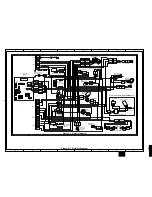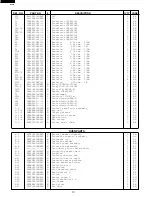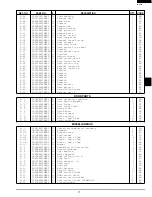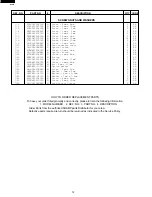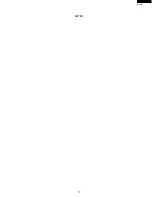
2
R-1874
MICROWAVE MEASUREMENT PROCEDURE (CANADA)
After adjustment of the door switches are completed individually or collectively, switch test and microwave leakage test must
be performed with survey instrument and test result must be confirmed to meet the requirement of the performance standard
for microwave ovens as undermentioned.
A. Requirements:
Every microwave oven shall function in such a manner that when the oven is fully assembled and operating with its service
controls and user controls adjusted to yield the maximum output, the leakage radiation, at all points at least 5 cm. from the
external surface of the oven, does not exceed:
1) 1.0mW/cm
2
with the test load of 275 ± 15 ml of water at an initial temperature 20 ±5
o
C.
2) 5.0mW/cm
2
when the outer enclosure is removed with a test load of 275 ± 15 ml of water at an initial temperature 20±5
o
C.
3) 5.0mW/cm
2
without a test load.
B. Preparation for testing:
Before beginning the actual measurement of leakage, proceed as follows:
1) Make sure that the actual instrument is operating normally as specified in its instruction booklet.
Important:
Survey instruments that comply with the requirement for instrumentation as prescribed by CSA and NHW performance standard
for microwave ovens must be used for testing recommended instruments are , NARDA 8100 and NARDA 8200.
2) Place the oven tray in the oven cavity.
3) Place the load of 275±15 ml of tap water initially at 20±5
o
C in the center of the oven cavity.
The water container shall be a low form of 600 ml beaker with an inside diameter of approx. 8.5 cm (3-1/2 in.) and made
of an electrically nonconductive material such as glass or plastic.
The placing of this standard load in the oven is important not only to protect the oven, but also to insure that any leakage
is measured accurately.
4) Set the cooking control on Full Power Cooking Mode, Close the door and select a cook cycle of several minutes. If the water
begins to boil before the survey is completed, replace it with 275 ml of cool water.
C. Leakage test with enclosure installed :
1) Grasp the probe of the survey instrument and hold it perpendicular to the gap between the door and the body of the oven.
2) Move the probe slowly, not faster than 2.5 cm/sec. along the gap, watching for the maximum indication on the meter.
3) Check for leakage at the door screen, sheet metal seams and other accessible positions where the continuity of the metal
has been breached (eg., around the switches, indicator, and vents).
While testing for leakage around the door pull the door away from the front of the oven as far as is permitted by the closed
latch assembly.
4) Measure carefully at the point of highest leakage and make sure that the highest leakage is no greater than 4mW/cm
2
, and
that the secondary interlock switch does turn the oven OFF before any door movement.
C. Leakage test without enclosure:
1) Remove the enclosure (cabinet).
2) Grasp the probe of the survey instrument and hold it perpendicular to all mechanical and electric parts of the oven that is
accessible to the user of the oven including, but not limited to, the waveguide, cavity seams, magnetron gap between the
door and the body of the oven.
3) Move the probe slowly, not faster than 2.5 cm/sec. along the gap, watching for the maximum indication on the meter.
4) Measure carefully at the point of highest leakage and make sure that the highest leakage is under 5mW/cm
2
.
CAUTION: Special attention should be given to avoid electrical shock because HIGH VOLTAGE is generated during this test
No Load test
1) Operate the oven without a load and measure the leakage by the same method as the above test procedure " Leakage
test with enclosure installed"
2. Make sure that the highest leakage should not exceed 5mW/cm
2
.
NOTE: After servicing, record data on service invoice and microwave leakage report.
Содержание Carousel R-1874
Страница 18: ...16 R 1874 NOTES ...
Страница 19: ...17 R 1874 NOTES ...





